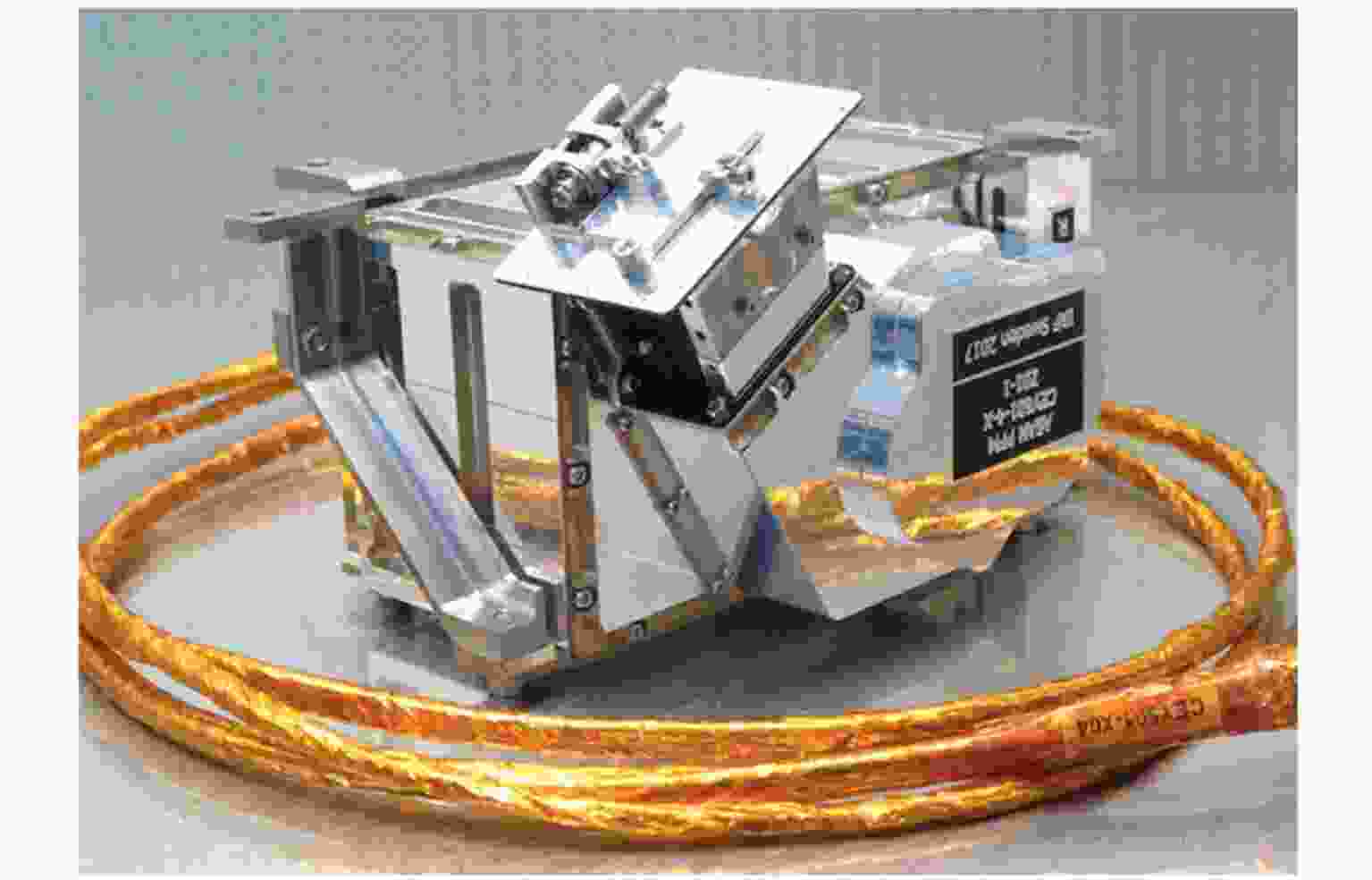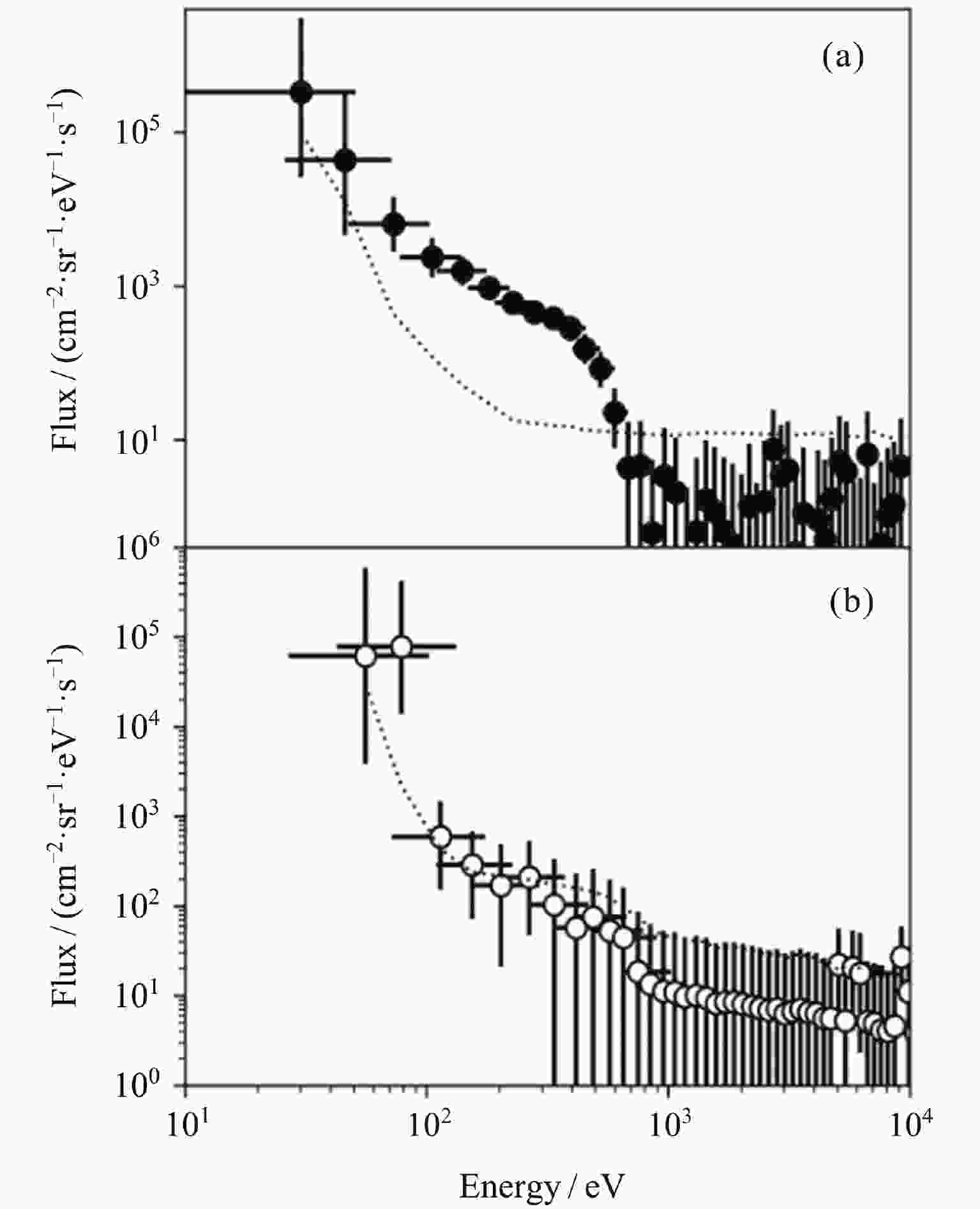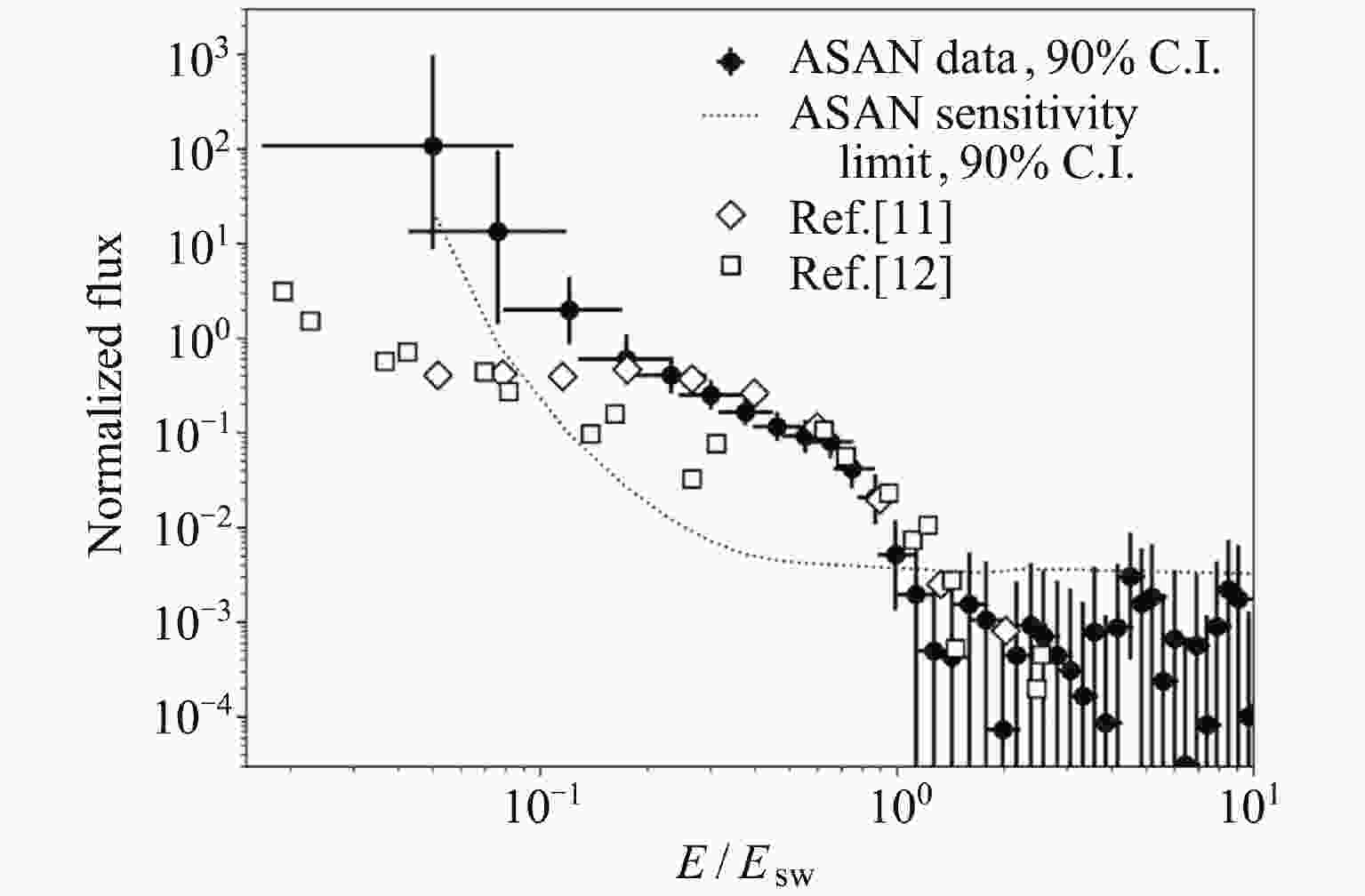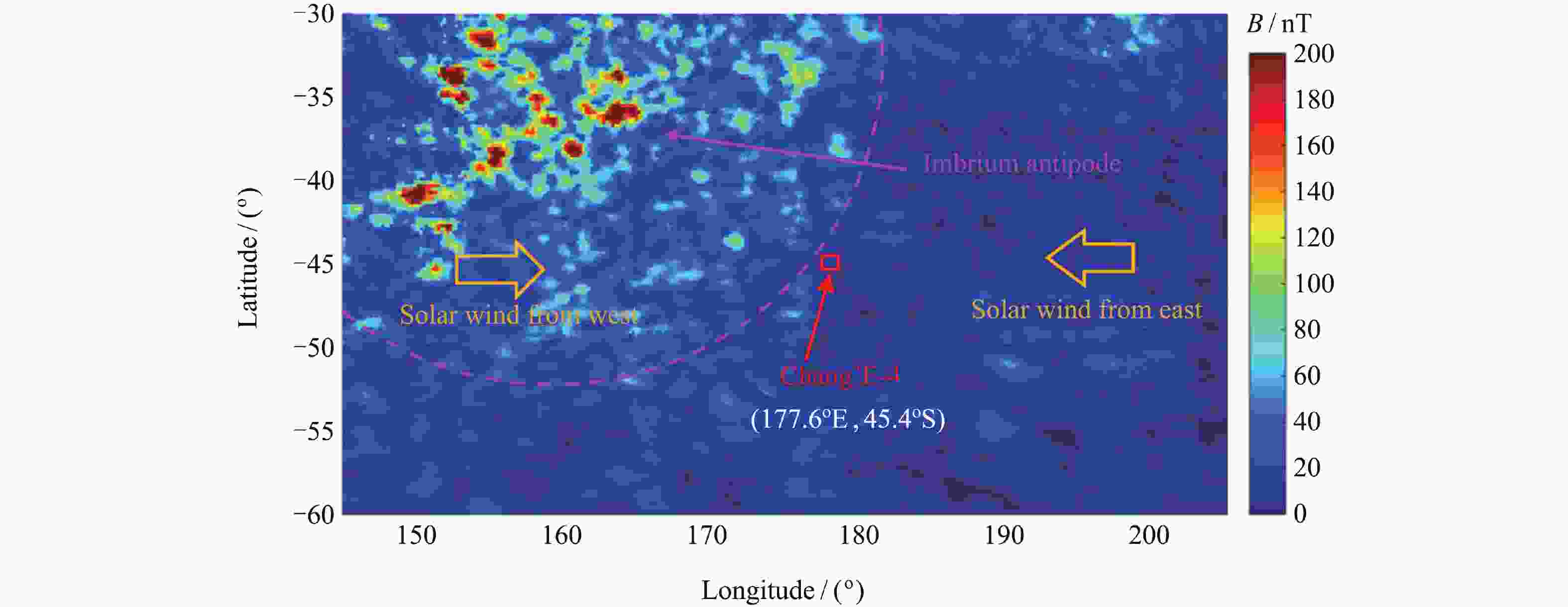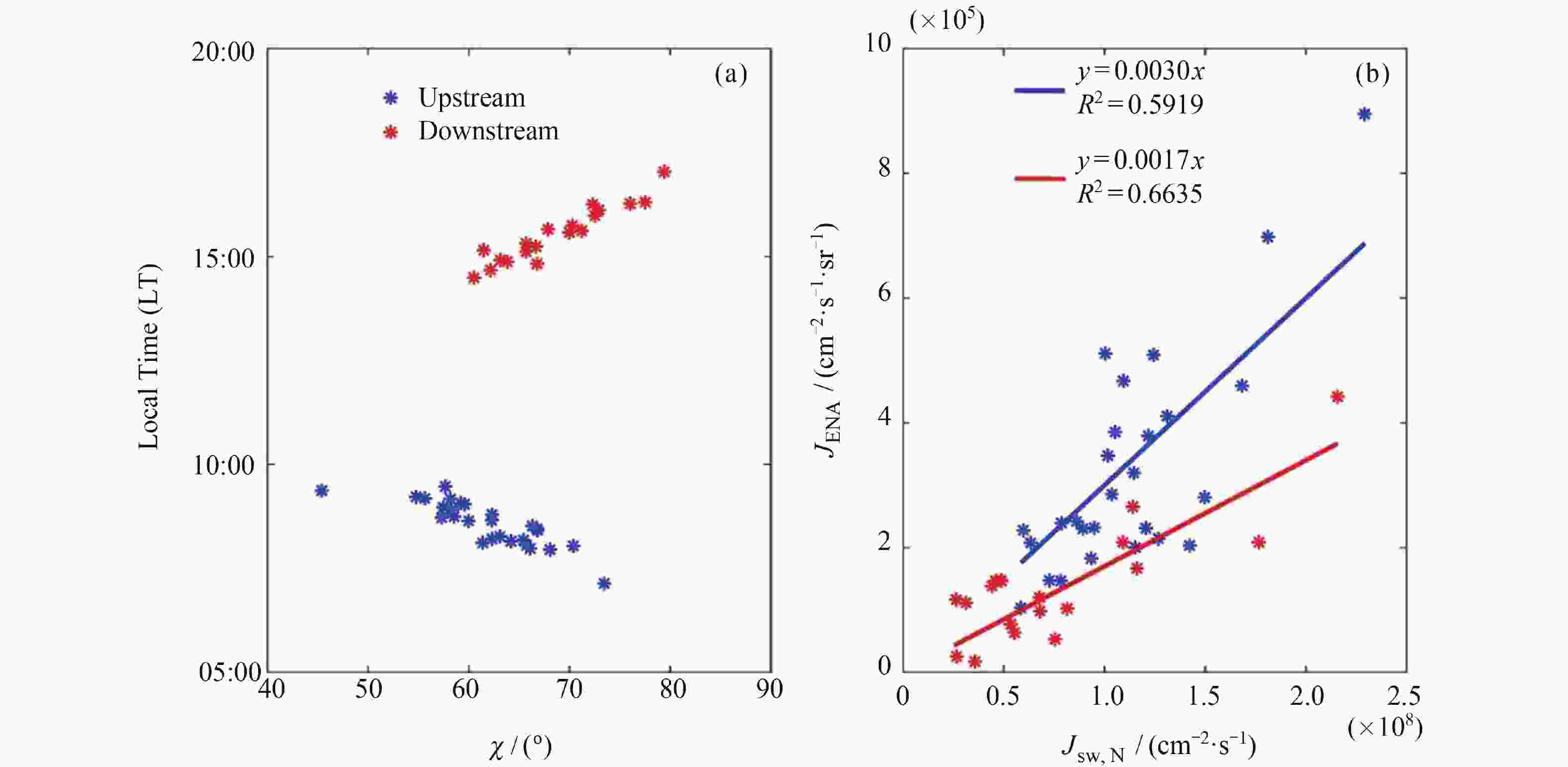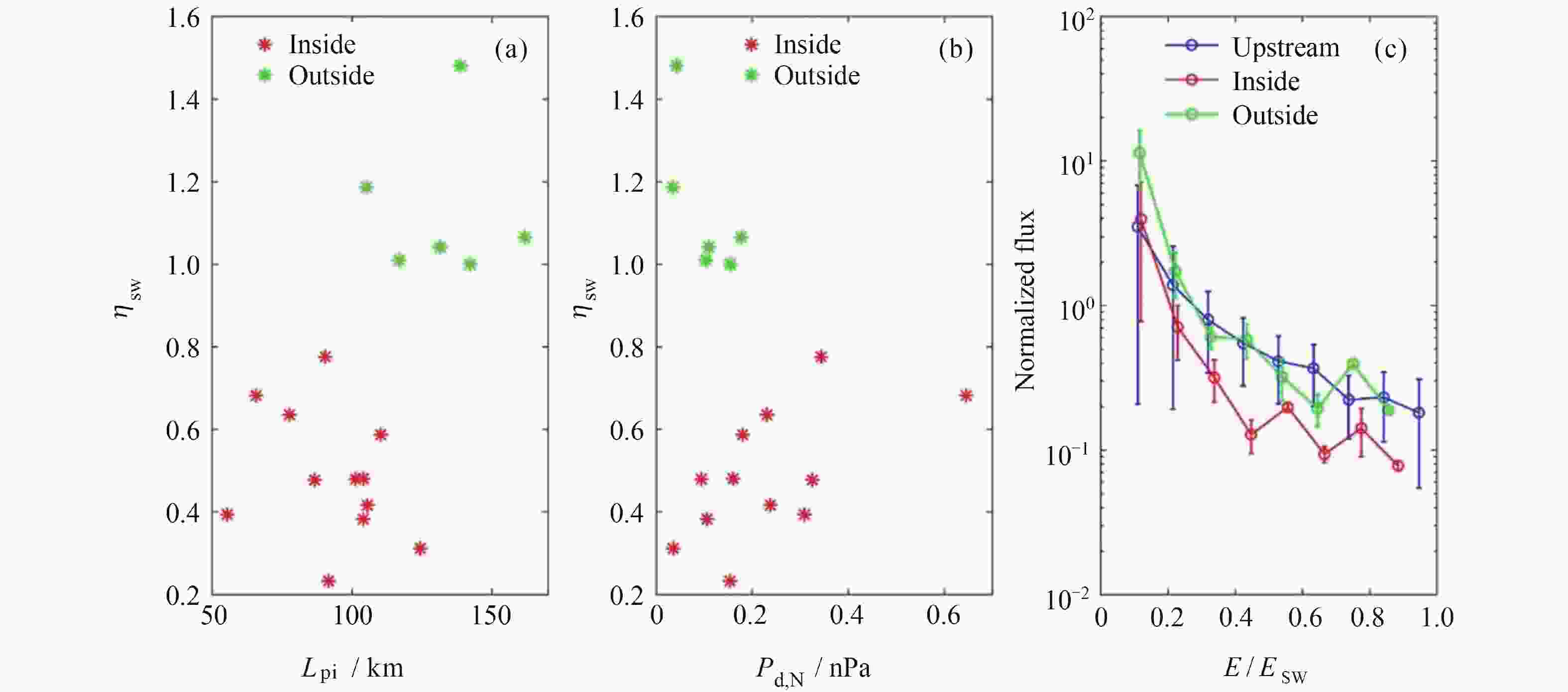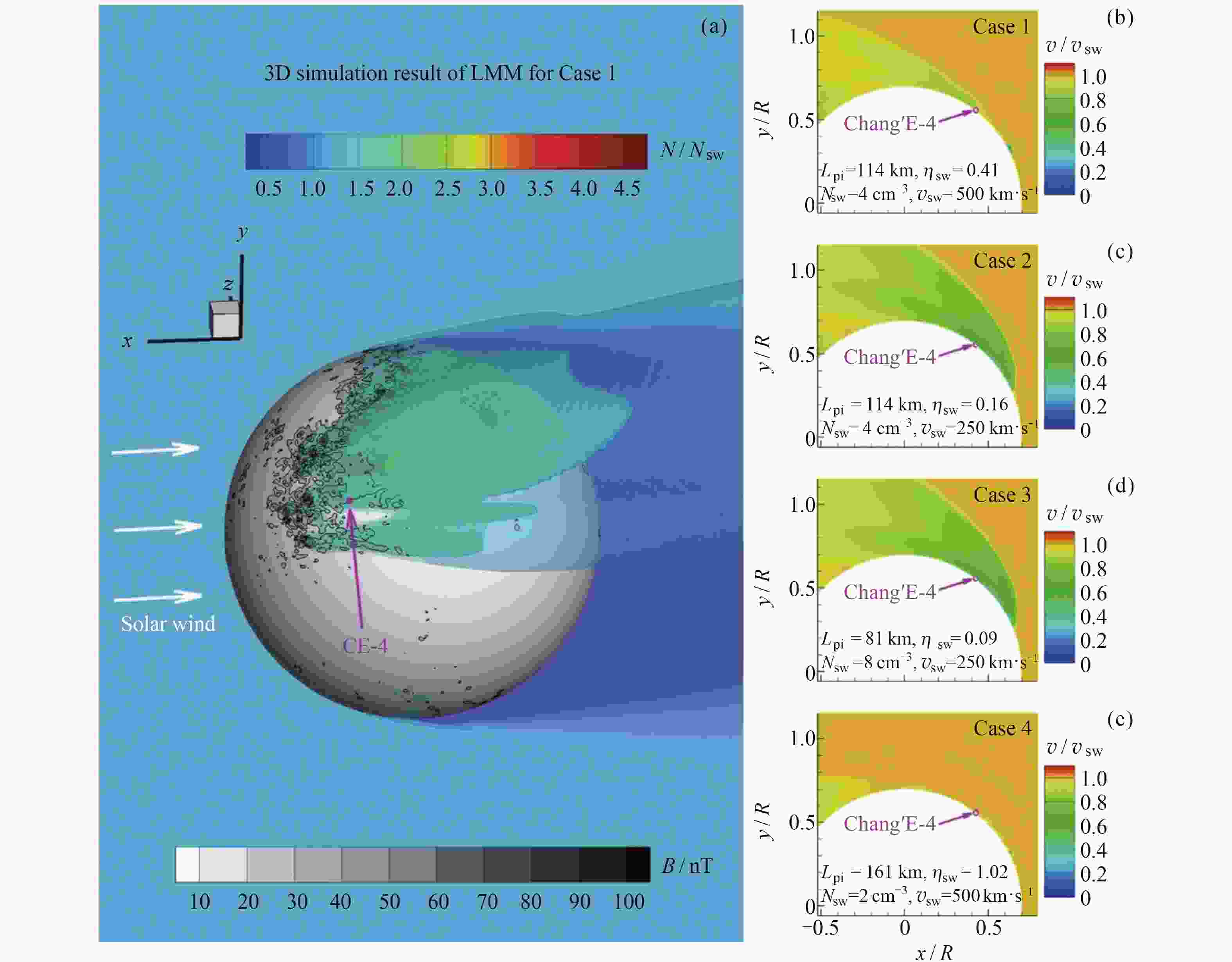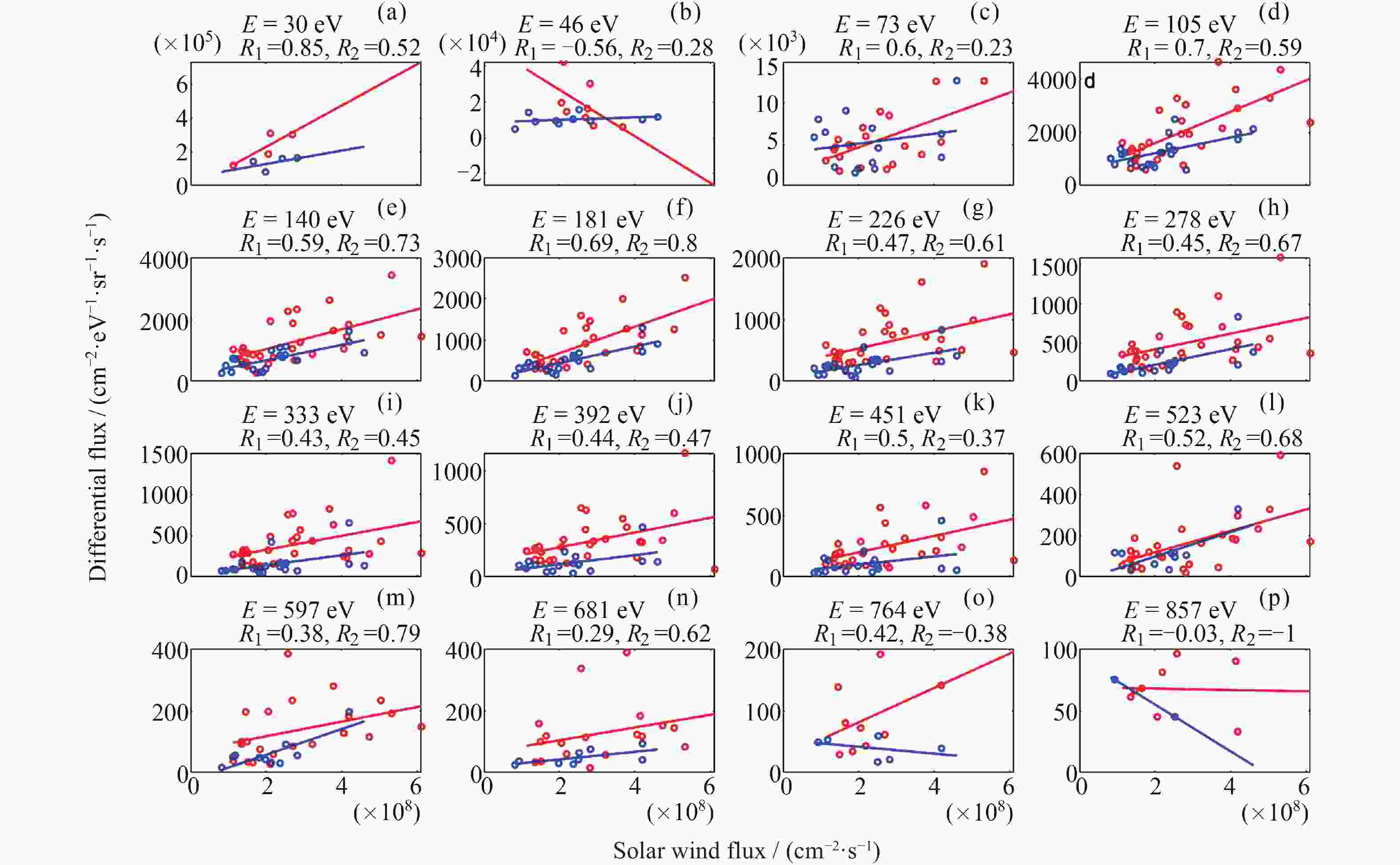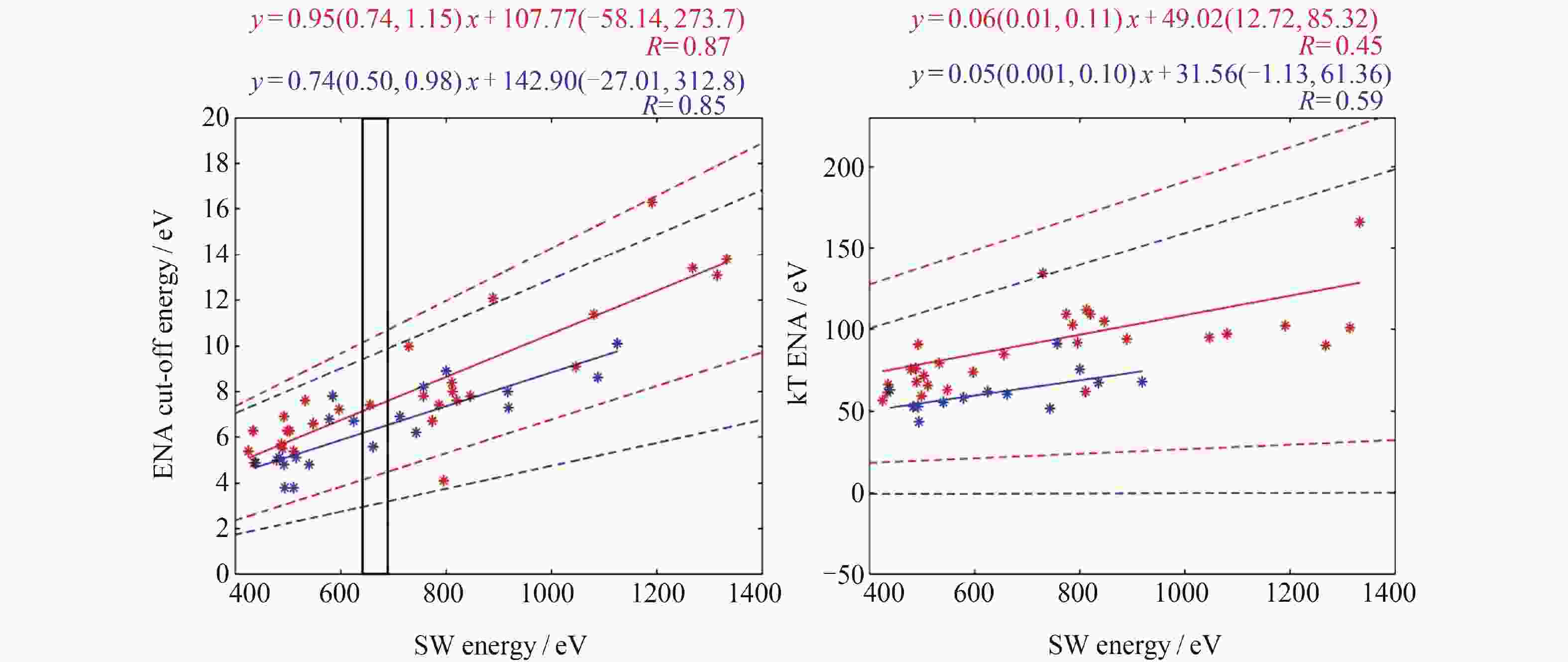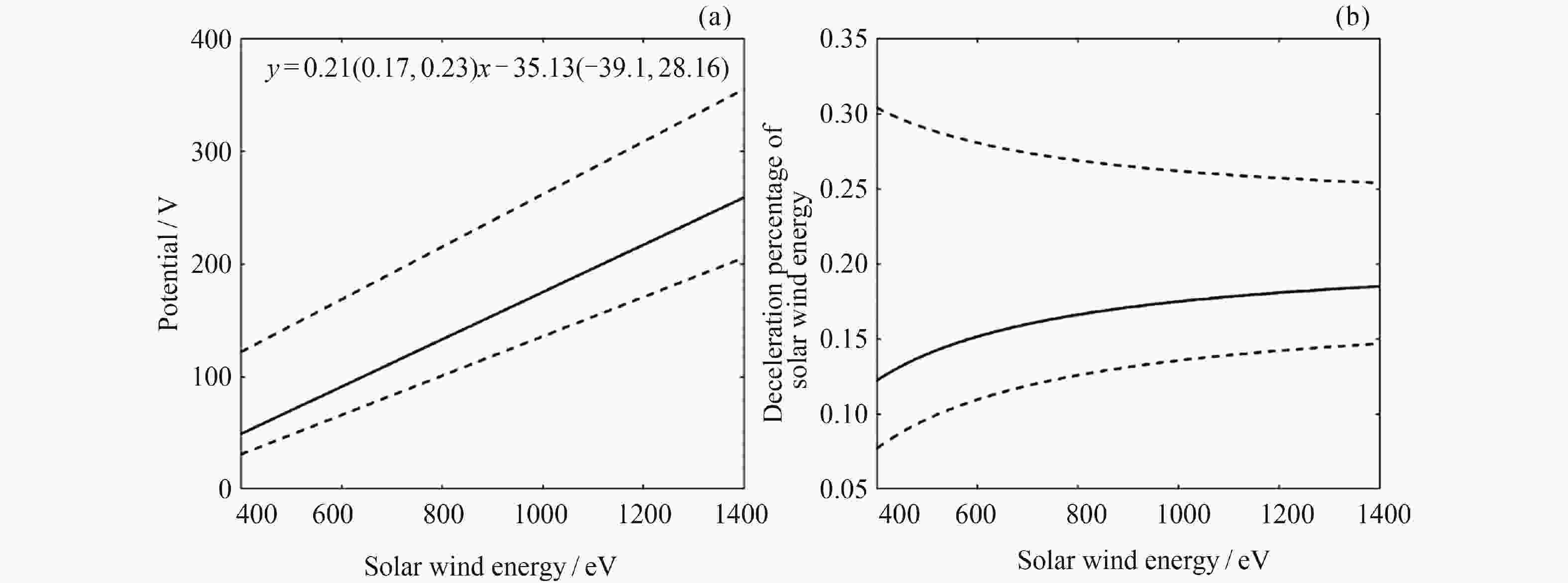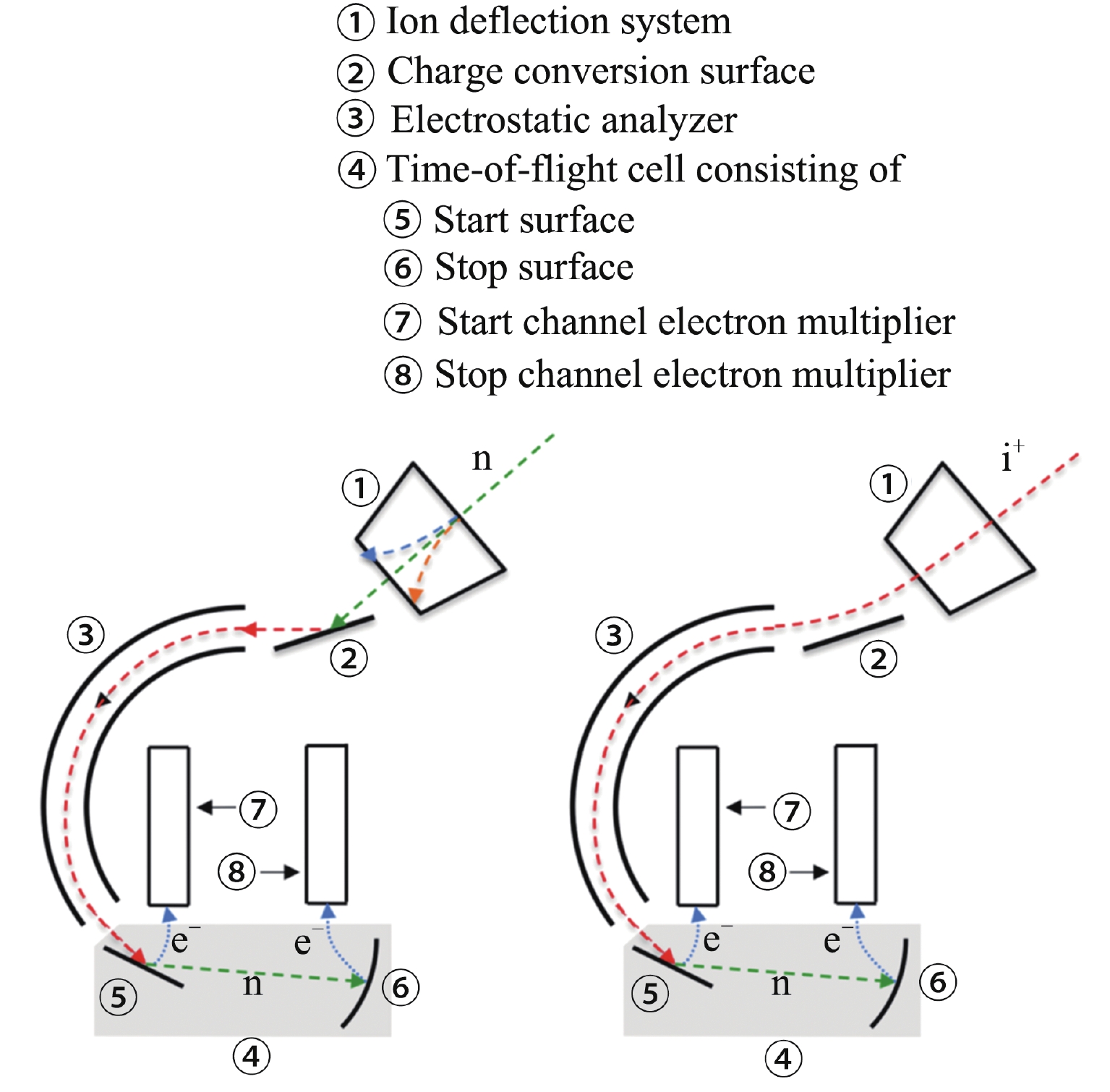嫦娥四号能量中性原子观测揭示太阳风与月面相互作用新特征
doi: 10.11728/cjss2022.01.20220113 cstr: 32142.14.cjss2022.01.20220113
Chang’E-4 Energetic Neutral Atom Observation Reveals New Features about the Solar Wind–Moon Interaction
-
摘要:
与地球不同,月球暴露在太阳风中。太阳风注入到月面,与月壤相互作用,部分太阳风质子以能量中性原子(Energetic Neutral Atom, ENA)的形式被月表散射。另外,月球局部地区的磁异常能阻挡太阳风到达月面,并形成微磁层,成为月面天然的保护屏障。然而以往相关的观测数据都来自轨道器,月面的真实情况无从知晓。嫦娥四号任务搭载的中性原子探测仪首次在月面就位测量ENA,为研究月面和太阳风相互作用提供了新的视角。本文综述了嫦娥四号的ENA探测,重点介绍了一些不同于以往遥感观测的新现象,包括月面ENA反射率较高,ENA通量向低能段聚集,以及除了氢ENA还有其他重成分ENA等。分析上游太阳风观测数据发现,月面对太阳风的作用主要体现在105~523 eV能量段,且在磁异常下游时ENA通量整体偏低。利用全球Hall MHD数值模拟,证明了微磁层是造成ENA通量降低的原因。同时,还发现月球微磁层的形成与太阳风动压以及离子惯性长度有关,微磁层内的静电场使得太阳风减速和偏转,对应的电势差为50~260 V。
-
关键词:
- 太阳风–月面相互作用 /
- 能量中性原子 /
- 微磁层 /
- 嫦娥四号
Abstract:Different from the Earth, the solar wind can directly impact the lunar surface, and partly be scattered as Energetic Neutral Atoms (ENAs). However, the lunar magnetic crustal fields in some regions, called magnetic anomalies, can deflect the solar wind to form a mini-magnetosphere, shielding the surface. All previous understandings about these processes are obtained from orbit, and the truth on the lunar surface is still unknown. The Advanced Small Analyzer for Neutrals (ASAN) onboard Chang’E-4 mission can detect the reflected Energetic Neutral Atoms (ENAs) from the lunar surface, which will provide new perspectives to study the solar wind interaction with the Moon. Here is a review on the recent works with the ENA data from ASAN, focusing on introducing some new discoveries by ASAN, such as a higher ENA reflection ratio, more ENAs gathered at lower energies, and some heavier ENAs other than the H ENA. Compare with the upstream solar wind data, it is found that the ENAs in the energy range of 105~523 eV are closely related with the solar wind. Moreover, the ENA fluxes downstream from the magnetic anomalies are generally smaller. Combined with the global Hall MHD simulation, reduction in the ENA flux is confirmed to be caused by a mini-magnetosphere. Meanwhile, it is found the formation of the mini-magnetosphere is determined by the solar wind dynamic pressure and the ion inertia length, and the mini-magnetosphere brings a deceleration to the solar wind, by a differential electrostatic potential of 50~260 V.
-
图 3 (a) 巡视器上的中性原子探测仪 (红色正方形) ,(b) 仪器安装方位 (巡视器前进方向为+x方向,虚线显示的是视场的视轴) ,(c) 中性原子探测仪收集粒子的表面区域的视场范围
Figure 3. (a) ASAN (red square) on the rover, (b) accommodation geometry (the rover moves nominally in the +x direction, and the dotted line shows the bore sight of FOV), (c) field of view footprint of the surface area from which ASAN collects particles
图 8 (a)和(b)分别为穿透效率
${\eta }_{{\rm{sw}}}$ 、离子惯性长度Lpi和太阳风动压法向分量Pd,N的依赖关系,(c)归一化的能谱,不同点间的间隔约为0.1 EswFigure 8. Dependences of penetrating efficiency (a) and the ion inertia length Lpi (b) on the normal component of the solar wind dynamic pressure Pd,N, respectively, (c) normalized energy spectra with an increment of about 0.1 Esw for the upstream, inside, and outside measurements, respectively
图 9 (a)情况1的三维模拟结果,其中月球上的灰度图表示月球磁场大小,彩色透视图表示密度等值图,其大小利用太阳风密度Nsw进行了归一化,紫色圆圈为嫦娥四号(Chang’E-4)位置;(b)(c)(d)(e)分别为情况1、2、3和4在z =–0.712 RL的xy平面上的速度模拟结果
Figure 9. (a) 3D view of the simulation result for Case 1, where the central ball represents the lunar body with gray contours to show the magnitudes of the crustal magnetic fields, and the 3D colored contours show the number densities normalized by the solar wind number density Nsw. The magenta circle indicates the location of Chang’E-4. (b)(c)(d)(e) are the results in the xy plane at z = –0.712 RL for Cases 1, 2, 3, and 4, respectively
图 10 ENA微分通量与太阳风通量的关系。红色圆圈表示在月球晨侧的数据,蓝色圆圈表示在月球昏侧的数据,R1和R2分别表示晨侧和昏侧的相关系数
Figure 10. Relationship between the ENA differential flux and solar wind flux. The red circles indicate the data on the lunar dawnside, and the blue circles indicate the data on the lunar duskside. R1 and R2 represent the correlation coefficients on the dawnside and duskside, respectively
表 1 各ASAN能量段内ENA微分通量与太阳风通量的线性拟合结果
Table 1. Linear fitting results of the integrated solar wind flux and the differential flux in each ASAN energy bin
能量/eV 晨侧 c 晨侧 k 晨侧 r2 昏侧 c 昏侧 k 昏侧 r2 30 1.22×10–3 –1.44×104 0.73 1.29×10–4 1.15×105 0.04 46 –1.31×10–4 5.31×104 0.32 –8.38×10–6 1.73×104 0.00 73 1.66×10–5 1.32×103 0.36 5.98×10–6 3.90×103 0.05 105 5.85×10–6 4.20×102 0.49 2.91×10–6 6.36×102 0.34 140 3.17×10–6 3.97×102 0.34 2.73×10–6 95.1 0.55 181 3.20×10–6 32.4 0.48 2.09×10–6 1.12 0.62 226 1.37×10–6 2.51×102 0.22 1.02×10–6 58.9 0.36 278 1.04×10–6 2.12×102 0.20 1.08×10–6 –12.4 0.48 333 8.43×10–7 1.60×102 0.18 6.24×10–7 13.9 0.22 392 7.02×10–7 1.38×102 0.19 4.59×10–7 22.7 0.24 451 6.60×10–7 66.4 0.25 3.43×10–7 27.6 0.16 523 5.31×10–7 17.3 0.27 5.94×10–7 –20.7 0.48 597 2.36×10–7 69.8 0.15 4.14×10–7 –25.3 0.64 681 2.09×10–7 64.1 0.08 1.24×10–7 17.4 0.39 764 2.78×10–7 25.4 0.18 –2.72×10–8 43.8 0.04 857 –5.46×10–9 68.8 0.00 –1.85×10–7 93.0 0.98 -
[1] PIETERS C M, GOSWAMI J N, CLARK R N, et al. Character and spatial distribution of OH/H2O on the surface of the Moon seen by M3 on chandrayaan-1[J]. Science, 2009, 326(5952): 568-572 doi: 10.1126/science.1178658 [2] LI Shuai, GARRICK-BETHELL I. Surface water at lunar magnetic anomalies[J]. Geophysical Research Letters, 2019, 46(24): 14318-14327 doi: 10.1029/2019GL084890 [3] WANG Huizi, ZHANG Jiang, SHI Quanqi, et al. Earth wind as a possible exogenous source of lunar surface hydration[J]. The Astrophysical Journal Letters, 2021, 907(2): L32 doi: 10.3847/2041-8213/abd559 [4] NOBLE S K, PIETERS C M, KELLER L P. An experimental approach to understanding the optical effects of space weathering[J]. Icarus, 2007, 192(2): 629-642 doi: 10.1016/j.icarus.2007.07.021 [5] WU Yanxue, LI Xiongyao, YAO Wenqing, et al. Impact characteristics of different rocks in a pulsed laser irradiation experiment: simulation of micrometeorite bombardment on the Moon[J]. Journal of Geophysical Research: Planets, 2017, 122(10): 1956-1967 doi: 10.1002/2016JE005220 [6] WURZ P, ROHNER U, WHITBY J A, et al. The lunar exosphere: the sputtering contribution[J]. Icarus, 2007, 191(2): 486-496 doi: 10.1016/j.icarus.2007.04.034 [7] SARANTOS M, KILLEN R M, GLENAR D A, et al. Metallic species, oxygen and silicon in the lunar exosphere: upper limits and prospects for LADEE measurements[J]. Journal of Geophysical Research: Space Physics, 2012, 117(A3): A03103 [8] SAITO Y, YOKOTA S, TANAKA T, et al. Solar wind proton reflection at the lunar surface: low energy ion measurement by MAP-PACE onboard SELENE (KAGUYA)[J]. Geophysical Research Letters, 2008, 35(24): L24205 doi: 10.1029/2008GL036077 [9] WIESER M, BARABASH S, FUTAANA Y, et al. Extremely high reflection of solar wind protons as neutral hydrogen atoms from regolith in space[J]. Planetary and Space Science, 2009, 57(14/15): 2132-2134 [10] SCHAUFELBERGER A, WURZ P, BARABASH S, et al. Scattering function for energetic neutral hydrogen atoms off the lunar surface[J]. Geophysical Research Letters, 2011, 38(22): L22202 [11] FUTAANA Y, BARABASH S, WIESER M, et al. Empirical energy spectra of neutralized solar wind protons from the lunar regolith[J]. Journal of Geophysical Research: Planets, 2012, 117(E5): E05005 [12] FUNSTEN H O, ALLEGRINI F, BOCHSLER P A, et al. Reflection of solar wind hydrogen from the lunar surface[J]. Journal of Geophysical Research: Planets, 2013, 118(2): 292-305 doi: 10.1002/jgre.20055 [13] MITCHELL D L, HALEKAS J S, LIN R P, et al. Global mapping of lunar crustal magnetic fields by Lunar Prospector[J]. Icarus, 2008, 194(2): 401-409 doi: 10.1016/j.icarus.2007.10.027 [14] TSUNAKAWA H, TAKAHASHI F, SHIMIZU H, et al. Surface vector mapping of magnetic anomalies over the Moon using Kaguya and Lunar Prospector observations[J]. Journal of Geophysical Research: Planets, 2015, 120(6): 1160-1185 doi: 10.1002/2014JE004785 [15] LIN R P, MITCHELL D L, CURTIS D W, et al. Lunar surface magnetic fields and their interaction with the solar wind: results from Lunar Prospector[J]. Science, 1998, 281(5382): 1480-1484 doi: 10.1126/science.281.5382.1480 [16] HALEKAS J S, BRAIN D A, MITCHELL D L, et al. On the occurrence of magnetic enhancements caused by solar wind interaction with lunar crustal fields[J]. Geophysical Research Letters, 2006, 33(8): L08106 [17] HALEKAS J S, POPPE A R, MCFADDEN J P, et al. Evidence for small-scale collisionless shocks at the moon from ARTEMIS[J]. Geophysical Research Letters, 2014, 41(21): 7436-7443 doi: 10.1002/2014GL061973 [18] HALEKAS J S, DELORY G T, BRAIN D A, et al. Density cavity observed over a strong lunar crustal magnetic anomaly in the solar wind: a mini-magnetosphere?[J]. Planetary and Space Science, 2008, 56(7): 941-946 doi: 10.1016/j.pss.2008.01.008 [19] LUE C, FUTAANA Y, BARABASH S, et al. Strong influence of lunar crustal fields on the solar wind flow[J]. Geophysical Research Letters, 2011, 38(3): L03202 [20] SAITO Y, YOKOTA Y, ASAMURA S, et al. In-flight performance and initial results of Plasma Energy Angle and Composition Experiment (PACE) on SELENE (Kaguya)[J]. Space Science Reviews, 2010, 154(1/2/3/4): 265-303 [21] WIESER M, BARABASH S, FUTAANA Y, et al. First observation of a mini-magnetosphere above a lunar magnetic anomaly using energetic neutral atoms[J]. Geophysical Research Letters, 2010, 37(5): L05103 [22] VORBURGER A, WURZ P, BARABASH S, et al. Energetic neutral atom observations of magnetic anomalies on the lunar surface[J]. Journal of Geophysical Research: Space Physics, 2012, 117(A7): A07208 [23] WIESER M, BARABASH S, WANG X D, et al. The advanced small analyzer for neutrals (ASAN) on the Chang’E-4 Rover Yutu-2[J]. Space Science Reviews, 2020, 216(4): 73 doi: 10.1007/s11214-020-00691-w [24] ZHANG Aibing, WIESER M, WANG Chi, et al. Emission of energetic neutral atoms measured on the lunar surface by Chang'E-4[J]. Planetary and Space Science, 2020, 189: 104970 doi: 10.1016/j.pss.2020.104970 [25] VORBURGER A, WURZ P, BARABASH S, et al. Energetic neutral atom imaging of the lunar surface[J]. Journal of Geophysical Research:Space Physics, 2013, 118(7): 3937-3945 doi: 10.1002/jgra.50337 [26] XIE Lianghai, LI Lei, ZHANG Aibing, et al. Inside a lunar mini-magnetosphere: first energetic neutral atom measurements on the lunar surface[J]. Geophysical Research Letters, 2021, 48(14): e2021GL093943 [27] XIE Lianghai, LI Lei, ZHANG Yiteng, et al. Three-dimensional Hall MHD simulation of lunar minimagnetosphere: general characteristics and comparison with Chang'E-2 observations[J]. Journal of Geophysical Research: Space Physics, 2015, 120(8): 6559-6568 doi: 10.1002/2015JA021647 [28] SAITO Y, NISHINO M N, FUJIMOTO M, et al. Simultaneous observation of the electron acceleration and ion deceleration over lunar magnetic anomalies[J]. Earth, Planets and Space, 2012, 64(2): 4 [29] FUTAANA Y, BARABASH S, WIESER M, et al. Remote energetic neutral atom imaging of electric potential over a lunar magnetic anomaly[J]. Geophysical Research Letters, 2013, 40(2): 262-266 doi: 10.1002/grl.50135 [30] WANG Huizi, XIAO Chao, SHI Quanqi, et al. Energetic neutral atom distribution on the lunar surface and its relationship with solar wind conditions[J]. The Astrophysical Journal Letters, 2021, 922(2): L41 doi: 10.3847/2041-8213/ac34f3 -
-





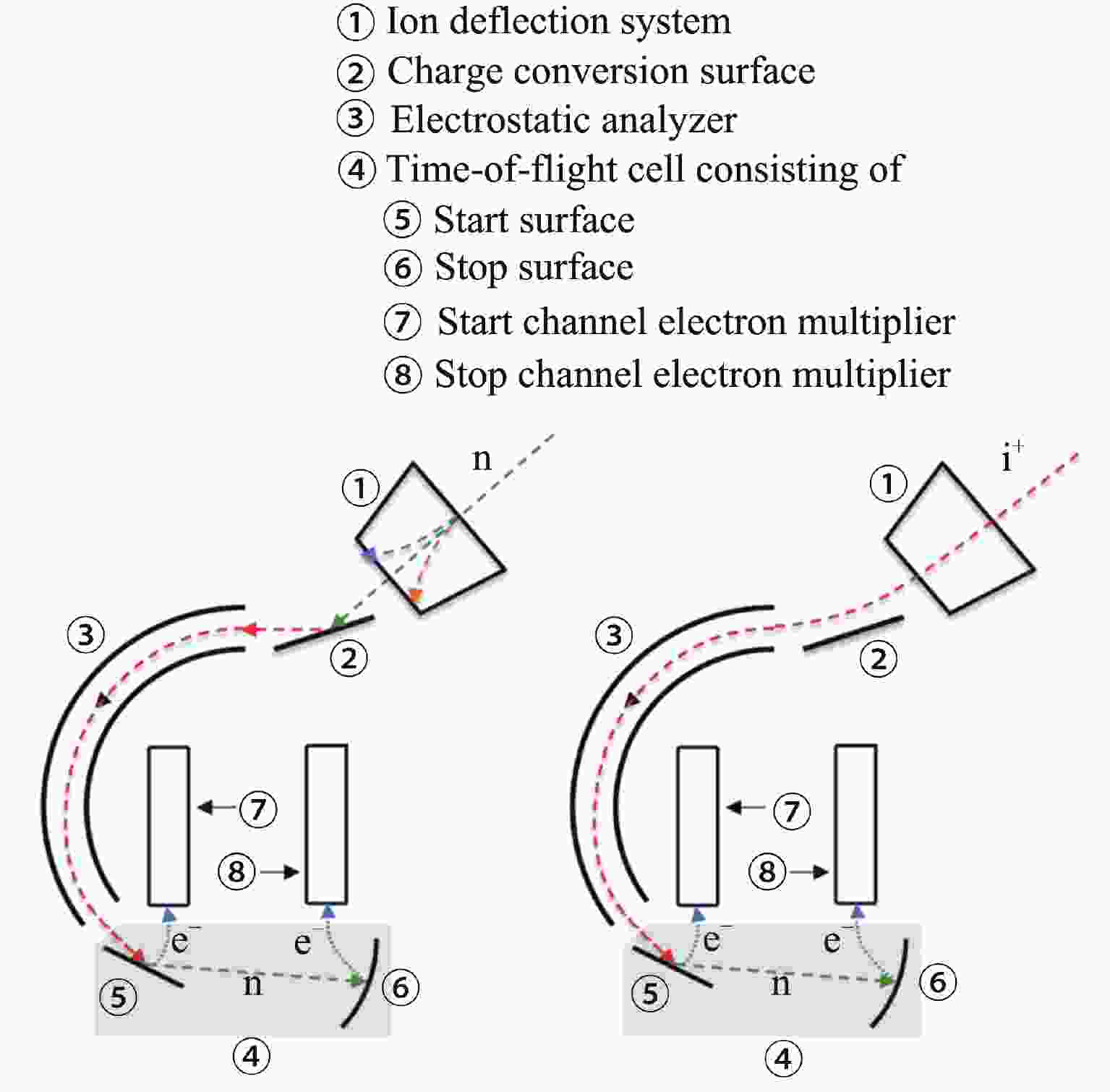
 下载:
下载:
